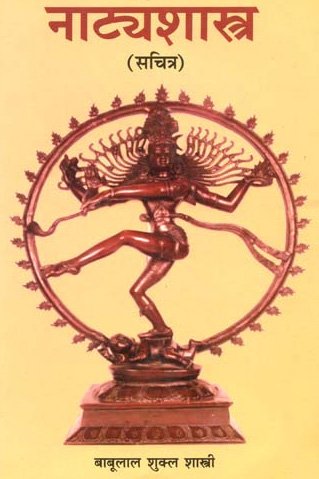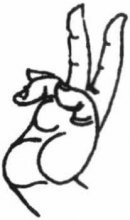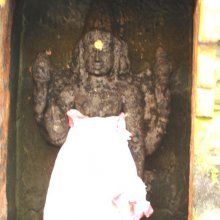Kartarimukhahasta, Kartarimukha-hasta, Kartarīmukhahasta: 2 definitions
Introduction:
Kartarimukhahasta means something in Hinduism, Sanskrit. If you want to know the exact meaning, history, etymology or English translation of this term then check out the descriptions on this page. Add your comment or reference to a book if you want to contribute to this summary article.
Images (photo gallery)
In Hinduism
Shilpashastra (iconography)
Source: Shodhganga: The significance of the mūla-beras (śilpa)Kartarīmukhahasta (कर्तरीमुखहस्त) or simply Kartarīmukha refers to “scissors-like” and represents one of the twenty-four gestures with a single hand, as defined according to texts dealing with śilpa (arts and crafs), known as śilpaśāstras.—Accordingly, pratimā-lakṣaṇa (body postures of the icons) is comprised of hand gestures (hasta, mudrā or kai-amaiti), stances/poses (āsanas) and inflexions of the body (bhaṅgas). There are thirty-two types of hands [viz., kartarīmukhahasta] classified into two major groups known as tolirkai (functional and expressive gestures) and elirkai (graceful posture of the hand).
(Description of Kartarīmukha-hasta): This mudrā is formed with the thumb and ring finger together and curved inward into the palm, the little finger either held erect or bent slightly, the middle and index fingers held vertically upward with the middle finger leaning forward a little and the forefinger held back from it to indicate the open scissors’ effect.

Shilpashastra (शिल्पशास्त्र, śilpaśāstra) represents the ancient Indian science (shastra) of creative arts (shilpa) such as sculpture, iconography and painting. Closely related to Vastushastra (architecture), they often share the same literature.
Natyashastra (theatrics and dramaturgy)
Source: Shodhganga: Elements of Art and Architecture in the Trtiyakhanda of the Visnudharmottarapurana (natya)Kartarīmukhahasta (कर्तरीमुखहस्त) or simply Kartarīmukha refers to one of the twenty-two Asaṃyuktahastas or “single hand gestures” (in Indian Dramas), according to the Viṣṇudharmottarapurāṇa, an ancient Sanskrit text which (being encyclopedic in nature) deals with a variety of cultural topics such as arts, architecture, music, grammar and astronomy.—The hasta-mudrās (lit. “hand-gestures”) are very essential to denote some particular action or state in dancing and these mudrās are formed with the help of hands and fingers. In the Viṣṇudharmottarapurāṇa, twenty two kinds of asaṃyuktahastas (“dancing postures made only by single hand”) are mentioned. e.g., kartarīmukhahasta.

Natyashastra (नाट्यशास्त्र, nāṭyaśāstra) refers to both the ancient Indian tradition (shastra) of performing arts, (natya—theatrics, drama, dance, music), as well as the name of a Sanskrit work dealing with these subjects. It also teaches the rules for composing Dramatic plays (nataka), construction and performance of Theater, and Poetic works (kavya).
See also (Relevant definitions)
Partial matches: Hasta, Kartarimukha.
Full-text (+28): Kartarimukha, Mahishasuramardini, Parthasarathi, Indra, Hayagriva, Balasubrahmaṇya, Ulagalantha Perumal, Nirakatu Perumal, Bhumivaraha, Shrinivasa-sundaraja, Candrashekhara, Scissor, Vishvarupakrishna, Kalasamhara, Vasudeva, Kiratamurti, Candrashekar, Travelling, Dhanvantari, Falling.
Relevant text
Search found 3 books and stories containing Kartarimukhahasta, Kartarīmukha-hasta, Kartarimukha-hasta, Kartarīmukhahasta; (plurals include: Kartarimukhahastas, hastas, Kartarīmukhahastas). You can also click to the full overview containing English textual excerpts. Below are direct links for the most relevant articles:
Gati in Theory and Practice (by Dr. Sujatha Mohan)
Description of Gati as in Bharatārṇava < [Chapter 2 - Concept and technique of Gati]
Vishnudharmottara Purana (Art and Architecture) (by Bhagyashree Sarma)
2.2. Hand Postures (a): Asaṃyukta-hasta < [Chapter 3 - Drama and Dance]
Temples of Munnur (Historical Study) (by R. Muthuraman)
Images of Brahma < [Chapter 5]

